Théâtre Jeongdong (정동극장)
1.7Km 2021-01-15
43, Jeongdong-gil, Jung-gu, Seoul
+82-2-751-1500
Le théâtre Jeongdong que vous pouvez trouver sur le chemin du
Deoksugung Doldamgil est un lieu de culture ouvert dans notre quotidiens. Le
théâtre Jeongdong est un théâtre vénérable
qui a une idée de restitution du premier théâtre contemporain
specialise au Pansori, le Wongaksa, créé en 1908. Après
la création du théâtre Jeongdong en 1995, divers performences
artistiques ont été mises en scène pour les citoyens.
Avec
la mise en scène du spectacle musical traditionnel "Chunhyangyeonga"
en 2010 et la performence "MISO" qui a terminé avec succès,
le théâtre est devenu un endroit que nombreux coréens et
touristes étrangers cherchent.
*Ouvert le 17 juin 1995
Théâtre Nanta à Myeongdong (명동난타극장)
1.7Km 2021-02-17
26, Myeongdong-gil, Jung-gu, Seoul-si
+82-2-739-8288
La salle de spectacle dédiée à Nanta à Myeongdong se trouve entre le 3ème et 5ème étage du bâtiment de l'UNESCO, où se trouvait avant Funky House. La salle possède 410 places, réparties sur trois niveaux. Les sièges se trouvent près de la scène pour une immersion totale. On y trouve aussi une salle pour les familles accompagnées de jeunes enfants au troisième étage. Cette salle est équipée d'une vitre insonorisée et d'un système stéréo. Une salle d'exposition se trouve dans le lobby. Veuillez consulter le site web pour plus de renseignements et pour réserver.
Observatoire de Jeongdong (정동전망대)
1.7Km 2022-08-18
15, Deoksugung-gil, Jung-gu, Seoul
+82-2-120
L'observatoire Jeongdong se situe au 13ème étage de la tour Seosomun de l'hôtel de ville. On trouve dans l'observatoire un café où chacun peut profiter d'une boisson rafraîchissante. Sur les murs ducafé, les visiteurs peuvent apprécier d'anciennes photos de Jeongdong. L'observatoire est connu pour offrir de belles vues sur le palais Deoksugun.
Quartier Daehangno (Quartier Universitaire) (대학로)
1.7Km 2021-02-02
12 Hyehwa-ro, Jongno-gu, Seoul-si
+82-2-2148-1114
La Rue Daehangno, connue comme la rue des jeunes gens, est l’ancien emplacement de l’Université National de Séoul. Depuis les années 1980, beaucoup de théâtres de jeu ont commence à se déplacer à la Rue Daehangno, et ils ont commencé à y développer un centre culturel. Bientôt, des cafés, des movie théâtre, et des pubs s’y sont installés également, et elle s’est agrandie comme un district de divertissements. Sa popularité est encore maintenue grâce à de petits théâtres fameux comme le Théâtre Parangsae (Oiseau Bleu) et le Théâtre Hakjeon ainsi que 30 théâtres additionnels qui se sont groupés ici et contribuent à la Rue Daehangno qui reste comme le centre des racines de performances artistiques en Corée.
Le centre de Daehangno, le Parc Marronnier, a fréquemment des performances en direct ou des représentations de danses faites par les jeunes gens. C’est la raison pour laquelle la Rue Daehangno est appelée “La Mecque des Jeux” ou encore “Rue de la Jeunesse”.
Une autre raison pour laquelle la Rue Daehangno est devenue si populaire pour les jeunes, ce sont les beaux paysages et la diététique intéressante qu’on peut y trouver. Beaucoup de restaurants, chaînes de fast food, cafés et bars y sont regroupés, et augmentent la facilité pour les jeunes gens de faire quelque chose après avoir joué. Son unique atmosphère et espace est encore beaucoup aimée par un grand nombre de jeunes.
Myeongdong (명동)
1.8Km 2025-09-19
Myeong-dong 2-ga, Jung-gu, Séoul, Corée du Sud
+82-2-778-0333
Myeong-dong évoque l’image d’une immense ville du shopping. En général, l’appellation « rue de Myeong-dong » désigne l’avenue d’environ 1 km qui relie la station Myeong-dong (ligne 4 du métro) à Euljiro et au grand magasin Lotte. On y trouve une forte concentration de boutiques de marques, de grands magasins et de petites échoppes. Considéré comme un véritable « temple de la mode », le quartier permet d’acheter une grande variété de vêtements, chaussures et accessoires. Contrairement à Namdaemun ou Dongdaemun, Myeong-dong se distingue par la présence de nombreuses enseignes de qualité. Parmi les grands magasins, on compte à proximité Lotte et Shinsegae, et sur la rue principale Noon Square, Myeong-dong Milleore et M Plaza, de grands centres commerciaux. Les boutiques de marques se concentrent aussi bien le long de l’avenue centrale que dans les ruelles adjacentes.
Outre le shopping, Myeong-dong offre une multitude d’options de restauration et de loisirs. Côté gastronomie, on y trouve des chaînes de restaurants familiaux, des fast-foods ainsi que des établissements coréens, occidentaux et japonais. Parmi les spécialités locales, le tonkatsu de Myeong-dong et les nouilles kalguksu (notamment chez Myeong-dong Gyoja) sont incontournables. Le quartier compte également de nombreux services pratiques tels que salons de coiffure, banques et cinémas.
Parmi les sites touristiques majeurs de Myeong-dong figurent la cathédrale de Myeong-dong, siège de l’archidiocèse catholique de Séoul, le Théâtre artistique de Myeong-dong (inauguré en juin 2009 sur l’ancien site du Théâtre national) ainsi que « Jae-mi-ro », la rue de la bande dessinée.
Seoul Gyeonggyojang (서울 경교장)
1.8Km 2021-06-22
29, Saemunan-ro, Jongno-gu, Seoul
+82-2-735-2038
Situé a Pyeong-dong, Jongno-gu, Seoul, c’est
un lieu historique ayant servi de bureau et lieu de résidence de Kim Gu, indépendantiste
et chef du gouvernement provisoire coréen, depuis son retour de Chine de
novembre 1945 jusqu’à son assassinat le 26 juin 1949. Avec le Ihwajang de Lee
SeungMan et le Samcheongjang de Kim GyuShik, Gyeonggyojang fait partie des 3
lieux qui ont vu la naissance de la fondation de la République de Corée. Choi
ChangHak, exploitant de mine d’or, bâtit cette maison au style architectural japonais
de 875m² (un sous-sol, et
deux étages en surface) sur un terrain de 5 235m² et la nomma Jukcheomjang. Après la date
d’indépendance du 15 août, Choi ChangHak offra cette résidence à Kim Gu qui
renomma cette demeure au nom japonais par le nom Gyeonggyojang tiré du nom d’un
pont se situant à proximité. En 1968 l’hôpital Goryeo, actuel Gangbuk Samsung,
racheta cette résidence pour l’intégrer dans son centre hospitalier.
Vallée de Suseong-dong (수성동계곡)
1.8Km 2025-04-18
185-3, Okin-dong, Jongno-gu, Seoul
Les courants d'eau de la vallée Suseong-dong s'écoulent du mont Inwangsan pour rejoindre la rivière Cheonggyecheon. Le site apparaît dans la peinture "Jangdong Palgyeongcheop" tout comme dans des récits historiques datant de la dynastie Joseon.
Parc Marronnier (마로니에공원)
1.8Km 2021-07-14
1-121, Dongsung-dong, Jongno-gu, Seoul-si
+82-2-2148-4158
Au centre du parc Marronnier on trouve un marronnier symbolique (marron d’Inde) alors que le quartier propose différents centres cultures pour profiter d'événements en plein air mais aussi expositions. Cette zone a commencé à se développer en 1975, lorsque l’Université Nationale de Séoul a déménagé alors que quelques 50 petits théâtres et plusieurs centaines de cafés se sont installés s dans ce quartier ont fait de cet endroit pour en faire un lieu de rencontres.
Marché de Gwangjang (광장시장)
1.8Km 2024-05-17
88, Changgyeonggung-ro, Jongno-gu, Seoul-si
+82-2-2267-0291
En 1904, la 41ème année du règne du roi Gojong, après le traité d'Eulsa, le Japon s'empare du pouvoir politique de la Corée. Le Japon s'empare des droits de direction du marché Namdaemun en mettant en place une politique d'invasion économique. Une solution économique pour la Corée est nécessaire et donc le marché Gwangjang est créé en 1905.
Au début, les biens vendus sur le marché étaient des biens primitifs, des produits agricoles et de la mer, des bois de chauffages, etc, importés en charrettes en petites quantités de Gapyeong, Icheon, Choelwon, etc. Aujourd'hui, 100 ans après son ouverture, le marché propose un très grand nombre de produits comme la soie, les étoffes (hanboks), les tissus (costume), les vêtements pour femmes, les rideaux, les literies, les objets lacrés et nacrés, les ustensiles de cuisine, les produits importés, les légumes et les fruits, les poissons séchés, les produits pour des cérémonies traditionnelles, les poissons, la viande, les légumes, etc.
La zone des restaurants qui se trouve à l'intersection de la porte Est, de la porte Nord 2 et de la porte Sud 1 est la zone la plus déveolppée du marché. Des personnes de tout âge (les mères, les étudiants, les séniors, etc) visitent le marché.
Ayant été désigné comme un des sites touristiques représentatifs du pays, il est visité par de nombreux touristes étrangers.
Le marché Gwangjang est considéré comme le tout premier marché permanent à avoir vu le jour en Corée et continue à être une destination touristique prisée. Le deuxième étage du marché propose notamment de la literie.
Le marché est aussi réputé pour la qualité de ses produits et les bas prix qu'il propose tout au long de l'année.
Yeongang Hall (두산아트센터)
1.8Km 2021-11-01
15, Jong-ro 33-gil, Jongno-gu, Seoul-si
+82-2-708-5001
Yeongang Hall(연강홀) est un centre de spectacles où se déroulent des pièces de théâtre, des projections de films, de la dance, de la musique folklorique coréenne etc.
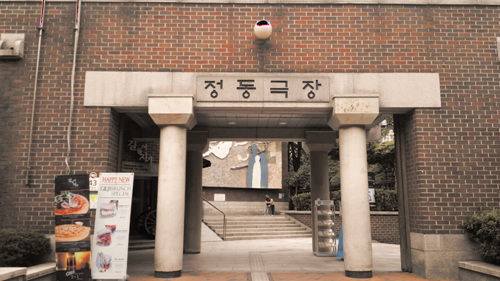
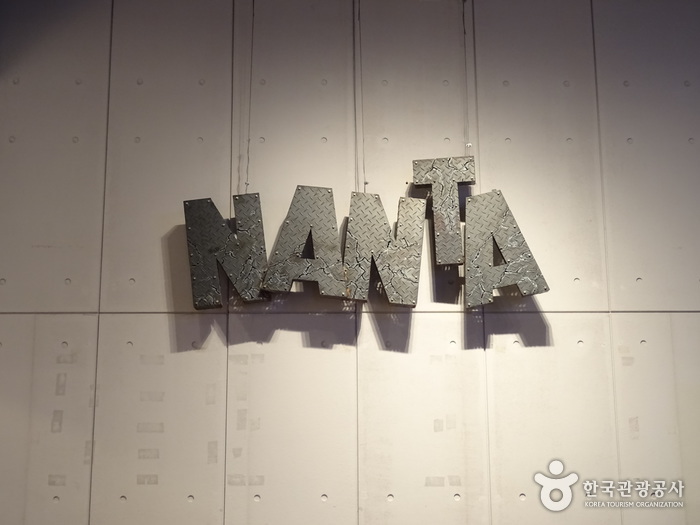

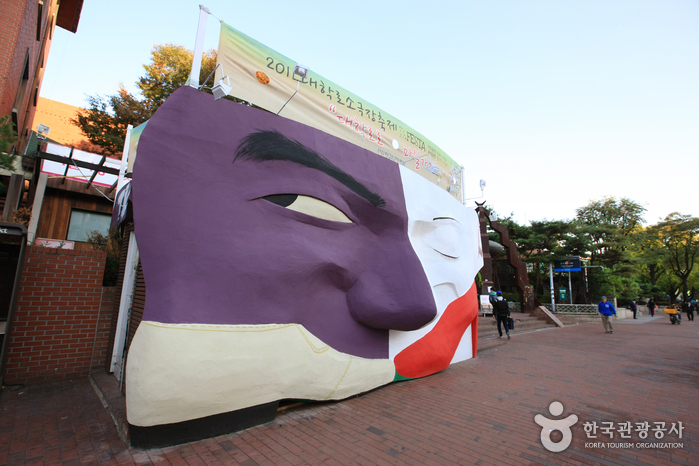
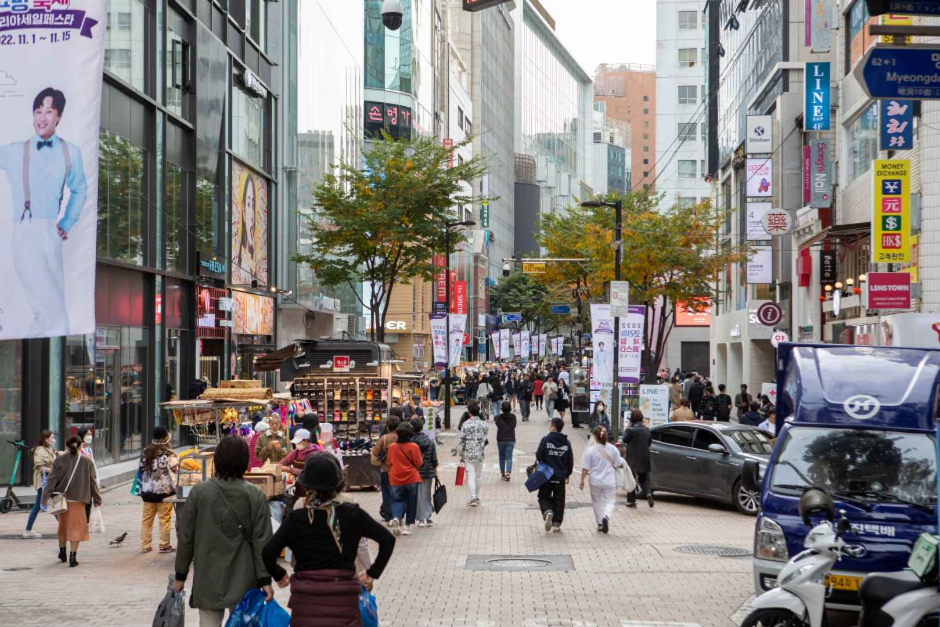
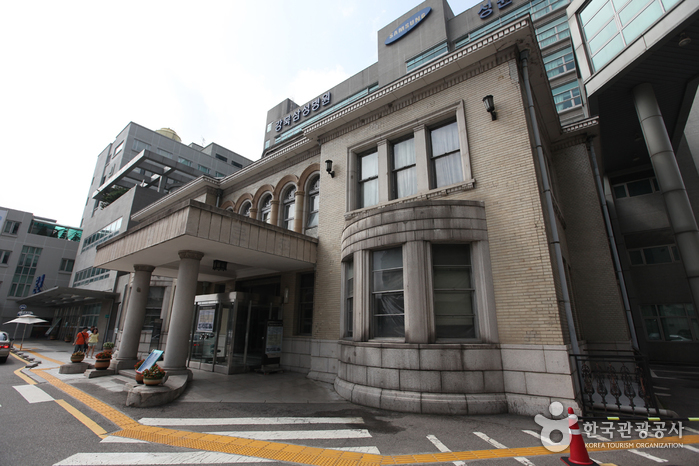
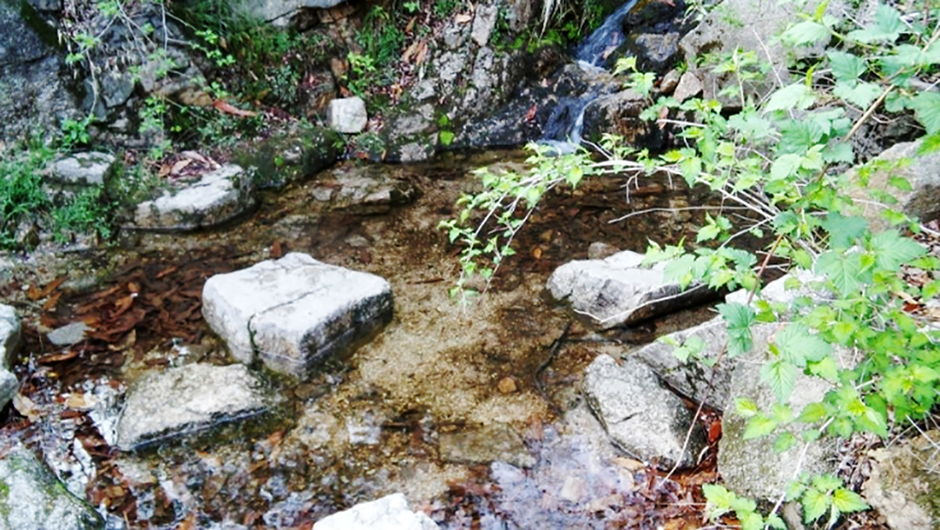
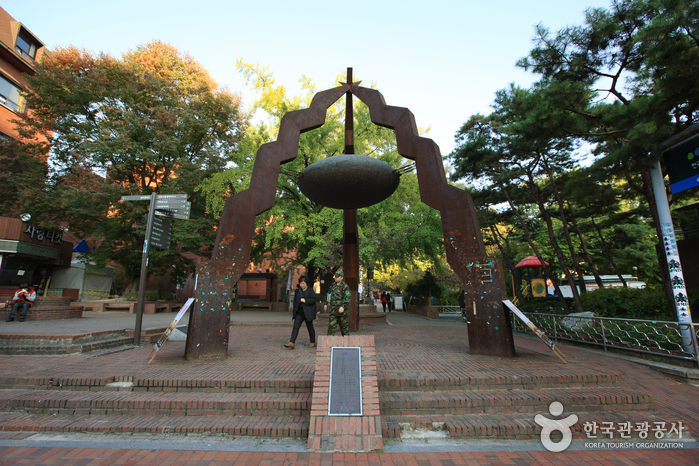
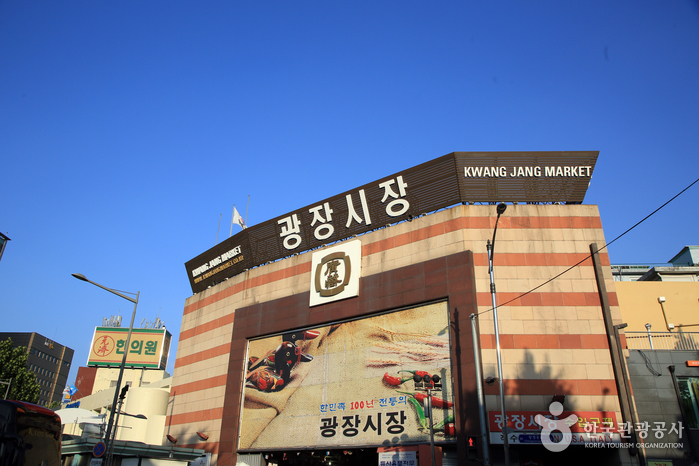
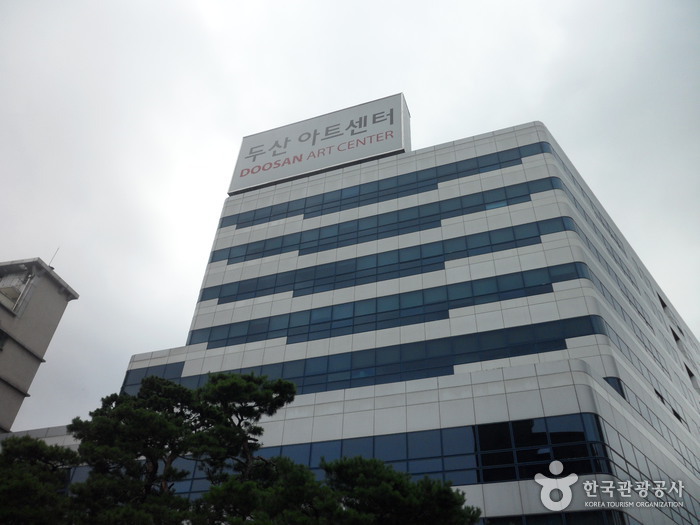
 Français
Français
 한국어
한국어 English
English 日本語
日本語 中文(简体)
中文(简体) Deutsch
Deutsch Español
Español Русский
Русский